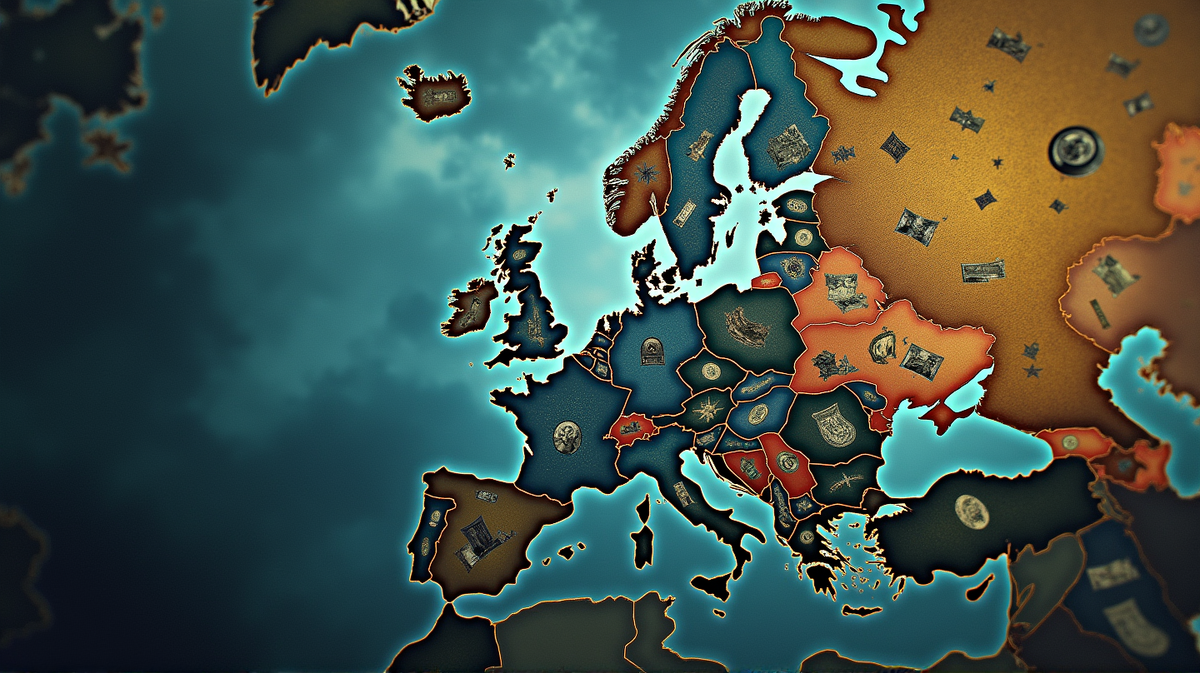Is Europe's Financial Gamble on Ukraine a Recipe for Disaster?
Europe's ambitious loan to Ukraine echoes past financial failures, raising concerns of risky schemes and potential taxpayer burdens.

In the gripping scene from The Big Short, Selena Gomez draws us into the enigmatic world of subprime mortgages at a blackjack table, but today’s European political landscape might just mirror that casino’s treacherous waters. The European Union is treading on thin ice, echoing financial disasters from the past as it contemplates a €150 billion loan to Ukraine. The strategy mirrors risky financial products reminiscent of the infamous subprime crisis. But has Europe learned from history, or is it merely replicating old mistakes under a new guise?
The Backbone of Europe’s Financial Scheme
In the aftermath of Russia’s invasion, the EU swiftly moved to freeze approximately €200 billion of Russian assets. While some member states initially recommended securing these funds outright for Ukraine, legal quandaries loomed large. The compromise? A labyrinthine SPV (Special Purpose Vehicle) — Europe’s innovative yet perilous solution. This holds the claim on the funds without physically moving them, a strategy designed to deflect legal challenges. But does this master plan cultivate safety or sow seeds for a future fiscal fiasco?
Lending by Design: A Double-Edged Sword
Europe’s financial gambit banks heavily on the notion that Ukraine will repay its debts with war reparations from Russia — an outcome even the most optimistic might find implausible. The crisis recalls the subprime dilemma: loans granted without realistic prospects for returns, banking on improbable future events. While on paper, this might afford Ukraine a lifeline, the reality might spell turmoil should Russia evade reparations.
Political Dissonance: A House Divided
The stark reality shines through — key EU nations hold conflicting views on financing Ukraine. As Olav Scholz famously remarked, Germany will not cut domestic spending to aid Ukraine, a sentiment likely echoed elsewhere in Europe. While the EU gambles on securing its financial schemes, its citizens remain skeptical, unwilling to bear the responsibility for failed policies. This internal discord threatens the cohesion of any such grand plans.
Preparing for Uncertain Outcomes
The likening of the Ukraine loan to a high-stakes blackjack game stretches beyond mere metaphor. Europe’s wager hinges on an uncertain legal landscape, banking on a court ruling unprecedentedly in its favor. An unfavorable verdict could plunge taxpayers into unforeseen depths of debt, pulling the financial rug from under nations already stretched thin.
Is the Path Forward a Road to Ruin?
The EU’s precarious plotting could spell trouble in protracted peace negotiations, especially if Vladimir Putin forces the return of seized assets. Europe’s intricate ruse may yet culminate in taxpayers financing refunds of confiscated wealth, echoing the toxic “seafood stew” that left people recoiling during the last crisis.
In today’s complex world, the parallels with past financial failures serve as cautionary tales. As Europe envisions its grand scheme for Ukraine, it will need more than just financial soothsay to avert a script that ends with its citizens footing a hefty bill.
According to UnHerd, the unfolding situation is by no means a game of chance but a strategic debate with profound implications. What remains to be seen is if Europe’s gambit will truly secure a brighter future or pave the way for another costly mistake.





